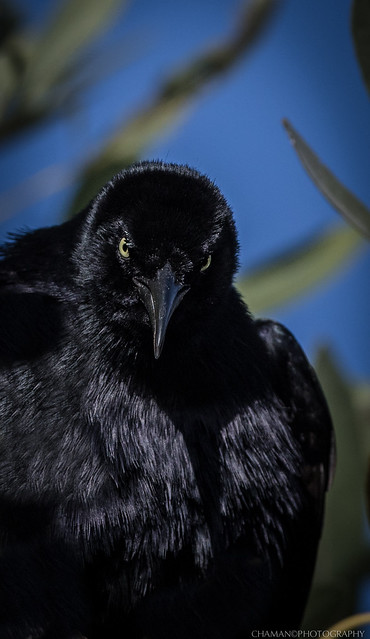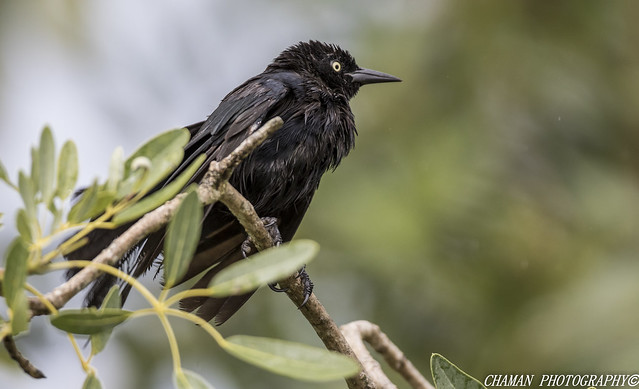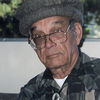Photographing A Black Horse
Jun 4, 2016 09:09:00 #
clansman wrote:
May I respectfully suggest that if intending to use fill-in flash , you tread carefully in case it spooks the horse. He/she may seem quite docile and happy to take it full face as one of mine did, (probably because trust between us was absolute, whereas the cat who had inveigled himself into the shot was literally gone in the flash) but best to check with the owner first. Otherwise, hope to see the pix.
I
I photographed a friends horses a few years ago knowing it was gonna be difficult but didn't know why. The flash didn't scare these particular horses but what I found difficult was the fact I learned these beautiful animals are restless and constantly moving. There is always something moving and I was in a low lighting situation inside a barn. Needless to say flashes mounted on delicate tripods was a challenge. I never got a photo I was happy with. I wrote it off as lack of experience on my part, and blamed the horses too lol
Jun 4, 2016 10:01:33 #
chaman wrote:
I would recommend trying to shoot the horse not in... (show quote)
Great illustrations. That's one of my big learnings for today.
Jun 4, 2016 10:14:25 #
Yup, that's the thing... Ron is right, and you'd get an accurate rendition by his advice- especially if shooting .jpg.
But there's a number of variables in your question... if shooting RAW, in bright, direct sunlight, I'd expose to hold highlight detail knowing my post processing is such that shadows can be recovered quite well (noise is handled separately). Thus, I'd underexpose a stop or stop and a half because highlight detail will improve much more than shadow detail will degrade. That's me. And, if you watch your histogram, you'll see.
If it's an overcast day, I'd shoot what the reflective meter says and add contrast in PP.
But there's a number of variables in your question... if shooting RAW, in bright, direct sunlight, I'd expose to hold highlight detail knowing my post processing is such that shadows can be recovered quite well (noise is handled separately). Thus, I'd underexpose a stop or stop and a half because highlight detail will improve much more than shadow detail will degrade. That's me. And, if you watch your histogram, you'll see.
If it's an overcast day, I'd shoot what the reflective meter says and add contrast in PP.
Jun 4, 2016 10:19:34 #
winterrose wrote:
tdekany is correct, be careful who's info you listen to....and rpavich is also correct, don't listen to tdekany.......
There is the other great photographer - I wish both of you would post examples to help out the OP. Let's see how your horse pictures turn out.
Jun 4, 2016 11:03:40 #
Jun 4, 2016 11:05:22 #
Jun 4, 2016 11:34:36 #
SharpShooter wrote:
I'm shooting horses tomorrow(Saturday), I'll find a black one and let you know what works best!
You can spot-meter, or use an average meter and add +1/3 to +2/3 EC. Should work fine.
Of course a bit of fill flash would probably be best. ;-)
SS
You can spot-meter, or use an average meter and add +1/3 to +2/3 EC. Should work fine.
Of course a bit of fill flash would probably be best. ;-)
SS
That's backwards - use the in camera spot meter and underexpose 2/3 stop, unless you want a gray mare, instead of a black stallion.
Of course, avoid contrasty light, particularly if you are using a separate incident meter. If you are in average light, then incident will give you the exact same results as underexposing a spot meter reading by 2/3 stops. The advantage of learning both ways is clear - if the lighting is changing (horse moving around between sunlight and shadows) you can be far quicker to respond without having to resort to taking out a hand-held meter and walking over to where the horse is and taking an incident reading.
As long as you understand the "why" either of the two light/exposure evaluation and determination methods work, you'll get good, consistent results. Correctly interpreting what your equipment is telling you is more important than using this or that method. Neither is right or wrong - it's just telling it like it is.
Jun 4, 2016 11:36:10 #
Let me get this straight: 1. Shoot in the pre-dawn morning, morning, afternoon, golden hour, dead of night, or any time you can find the horse, but always with the lens cap off; 2. Meter from a gray card, the palm of your hand (+ 1-9 stops depending on lens cap position), or Sharpshooter's left buttock (+ negative 3); 3. Use a flash or roadside flare, but be sure to feed a massive dose of bute to the horse before approaching closer than 200 yards.
Yep, that will all work.
There are three other things I would suggest, in all seriousness: 1. If you use a flash, check with the owner and pre-flash the horse from within 3-4 feet so the horse knows what's going on (Keep in mind that horses are split-brained, so you want to work both sides, lest the left brain be saying, "Uh-yup, this is sure fun," while the right screams, "It's the flaming son of Beelzebub, kick the crap out of him!"). 2. Horses look best with their ears forward, listening in your direction, so bring a "clicker" (one of those little, metal things we used to get in Cracker Jacks but now pay $4 for at the Dollar Store), or grab a handful of grass and toss it up (better yet, have someone else stand next to you and toss bits up) as you're taking your shots; 3. If the field size permits, get the horse running at you as you shoot. Don't worry about getting run over, the horse hates collisions more than you do, and sticking your non-shooting hand and arm out to the side of your body will convince him that you're really, really too big to overrun. I've worked with as many as six horses being run at me and have never come close to being hit. (WARNING: Do not try this technique with horned animals, wolves, or alligators.)
Enjoy.
Yep, that will all work.
There are three other things I would suggest, in all seriousness: 1. If you use a flash, check with the owner and pre-flash the horse from within 3-4 feet so the horse knows what's going on (Keep in mind that horses are split-brained, so you want to work both sides, lest the left brain be saying, "Uh-yup, this is sure fun," while the right screams, "It's the flaming son of Beelzebub, kick the crap out of him!"). 2. Horses look best with their ears forward, listening in your direction, so bring a "clicker" (one of those little, metal things we used to get in Cracker Jacks but now pay $4 for at the Dollar Store), or grab a handful of grass and toss it up (better yet, have someone else stand next to you and toss bits up) as you're taking your shots; 3. If the field size permits, get the horse running at you as you shoot. Don't worry about getting run over, the horse hates collisions more than you do, and sticking your non-shooting hand and arm out to the side of your body will convince him that you're really, really too big to overrun. I've worked with as many as six horses being run at me and have never come close to being hit. (WARNING: Do not try this technique with horned animals, wolves, or alligators.)
Enjoy.
Jun 4, 2016 11:37:30 #
Yay, a good "zone" reply.BUT, the in-camera spot meters are really not"spot", that is, the spot is BIG, so get up close to the horse.
Jun 4, 2016 11:54:34 #
MTG44 wrote:
A friend of mine has asked me to photograph her horse . He is a very black horse and would like ask what settings to use to get as much detail as possible. Supposed to be a bright day and will be taken in pasture not a dirt rink and will be using 7D11 with 18-300 Sigma.
Photo in shade if at all possible. Meter the light falling on the horse not the horse. Will probably need work in Photoshop to bring out good detail.
Jun 4, 2016 12:04:21 #
Leitz
Loc: Solms
Then one could go out and photograph a black object and learn how exposure affects the image. Of course, that would require one to think for oneself, so perhaps not such a good idea after all.
Jun 4, 2016 12:19:14 #
amfoto1
Loc: San Jose, Calif. USA
valley4photo wrote:
Photo in shade if at all possible. Meter the light falling on the horse not the horse. Will probably need work in Photoshop to bring out good detail.
Yes, that's the best way to set an initial exposure. But it can't be done with the camera's reflective meter. I always carry a separate handheld incident meter for this more accurate way of measuring light and setting fully manual exposure.
However, the camera's reflective meter can be used instead. The most accurate way would be to meter off of a gray card held in the same light as will be lighting your subject and set a manual exposure.
But, if needing or wanting to use any of the auto exposure modes instead, you'll instead need to use E.C. to "correct" the reflective meter.
Jrhoffman75 wrote:
Shouldn't it be negative EC? Camera meter will read horse and try to make it middle gray.
Read off open palm/open up one stop is a good approach.
Read off open palm/open up one stop is a good approach.
Yes, that's correct.... A subject that's darker than middle gray will make the camera want to brighten it up, causing over-exposing. You want to dial in some - (minus) Exposure Compensation, if using any of the auto exposure modes. If using Manual mode, well there's no Exposure Compensation with that. How much E.C. is needed will depend upon how tightly you are shooting the shot.... if the horse is at a distance and only a small part of the entire scene that's more of a mix of tonalities, you may not need much - E.C. But if you are up close, and largely filling the frame with the horse itself, a lot more - E.C. All the mixed tonalities of the following image (including the horse itself, as well as the rider's outfit, light tonality background and all else) didn't need much or any E.C.
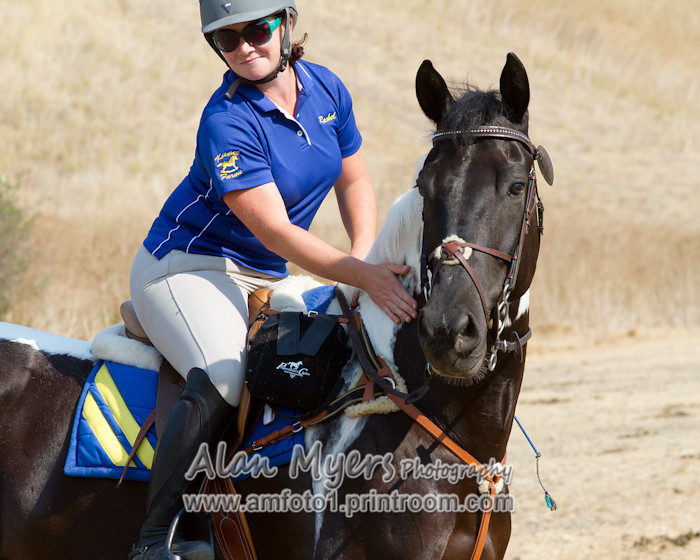
Watch your histogram... with a black horse that's occupying a lot of the image area, you should see a hefty peak bunched up over near the left hand side of the histogram display. You want to be careful that it's not "over-flowing" of the left hand side of the histogram graph, although it's probably okay if it's touching it. Still, it's okay, maybe even better to reduce exposure a little in post-processing (especially if you shoot RAW files, instead of JPEGs).
Usually, if at all possible it's better to shoot in light shade, instead of outside in stronger, direct sunlight that will make for strong shadows. It was early in the day and slightly overcast, for above shot. Even so, the shadows on the rider's face and horse are a little bothersome.
But shooting in really deep shade or indoors can be particularly difficult, although it can be done.

If indoors or in a covered arena, watch out for sodium vapor and fluorescent lighting.... That makes for really ugly color tints, often on only part of the horse if you are in a mixed light situation. For the above, I had the arena owner turn off the lights and bumped up my ISO instead, shot by indirect daylight only, even though it forced me to use higher ISO and slower shutter speeds than I'd have liked.
Use a flash and/or reflector of some sort to bounce some light onto the subject to bring out detail. In both cases, you have to be a little careful. Most horses ignore the light from a flash... especially if it's a lower power fill flash. But, some react to the noise of flash... the "pop" when it fires and the whine when it's recycling. So, be a little careful, don't get too close with flash. If at all concerned, maybe test fire the flash a few times nearby but pointed away from the horse, and watch it's reaction closely. And, it's not just flash that you have to be concerned about... horse also can react to a large reflector being held by an assistant.
In fact, a horse might be concerned what you're doing pointing that object at it. I'll often go in close, talk to the horse and let it check out my camera gear before I take a single shot. Yes, some of my lenses have gotten chewed on.... my 24-70/2.8 must look tasty.
 A few minutes "getting acquainted" will often make for a much more relaxed session.
A few minutes "getting acquainted" will often make for a much more relaxed session. Trip the camera shutter a couple times, too... near the horse but not pointing the camera at it, and watch for its response. Some react to the noise, others don't. It depends upon the camera, too. I've never had much problem with horses and my APS-C cameras, even when shooting high speed bursts of shots. However, a few horses have "gone vertical" at the sound of my full frame camera's shutter!
Below was shot in shade, with a partly sunlit background. It's in an arena where the sand is highly reflective, and also near a judge's booth that's painted pure white and acts as a big reflector.
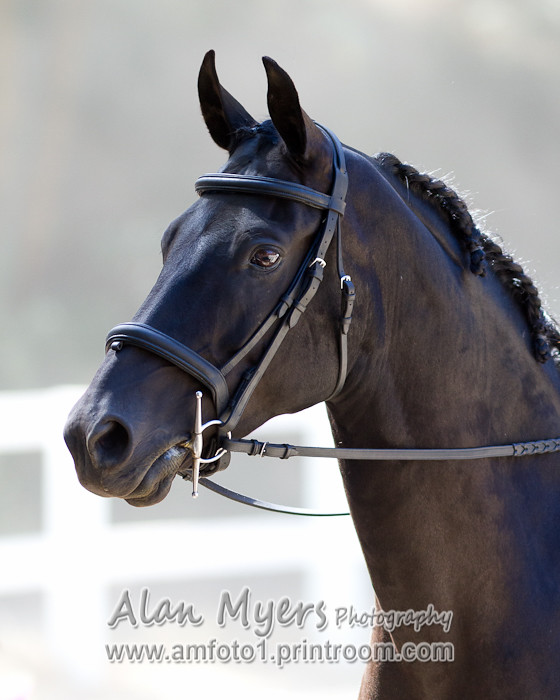
Notice the reflections in the horse's eye. You want some of that, for the best look. A "catchlight" from a flash can work, as well.
Black and white, in particular, tend to reflect tints from anything of strong color that's close by. That's not always a problem, sometimes works out well in fact, as above. Just be aware of and watch for it.
Usually with horses you want to capture a shot showing alert, "pretty ears"... perked up and attentive as in the second shot above. Many horses tend to tuck them as soon as a camera is pointed in their direction, it seems. So this can be tricky and you might need to be quick and take a lot of extra shots. It sort of depends on the breed and activity at the moment. For example, Friesians, such as in the top shot above, don't perk up their ears very often and almost always tuck their ears back during dressage tests, probably listening intently to their rider's soft verbal directions.
Have fun and take your time. Horses sense your tenseness or comfort level and react to it. Often, unless you catch them in a candid moment, the best shots are gotten late in a session after everyone has settle down a bit.
Jun 4, 2016 12:50:05 #
Take a few shots with varying exposures and look at the histogram. Pick the exposure that gets the histogram as far over to the right without burning out. This gets as much information into your file as possible and you can pull back the exposure easily in software to get the effect that you want. Shoot in RAW to give yourself the best chance.
Jun 4, 2016 13:03:38 #
gvarner
Loc: Central Oregon Coast
Might start with Manual mode and take a reading off your hand, then take a look at the histogram and adjust accordingly. A polarizer might be helpful to minimize glare and shiny spots.
Jun 4, 2016 13:03:55 #
amfoto1
Loc: San Jose, Calif. USA
TeeKay wrote:
Take a few shots with varying exposures and look at the histogram. Pick the exposure that gets the histogram as far over to the right without burning out. This gets as much information into your file as possible and you can pull back the exposure easily in software to get the effect that you want. Shoot in RAW to give yourself the best chance.
Sorry, but that's incorrect with a predominantly black subject... To render it as accurately as possible and with the most detail, you need to "position" the exposure left of center on the histogram, biased toward, but not "falling off" the left hand side.
Sure, watch the highlights on the right side aren't "falling off" the display, which would indicate over-exposure. But, that's unlikely unless you're shooting a scene of too extreme dynamic range (in which case you should move the subject and/or use fill flash/reflector to decrease the dynamic range). With a dark subject I'd pay a lot more attention to the left hand/shadow side.
If you want to reply, then register here. Registration is free and your account is created instantly, so you can post right away.

